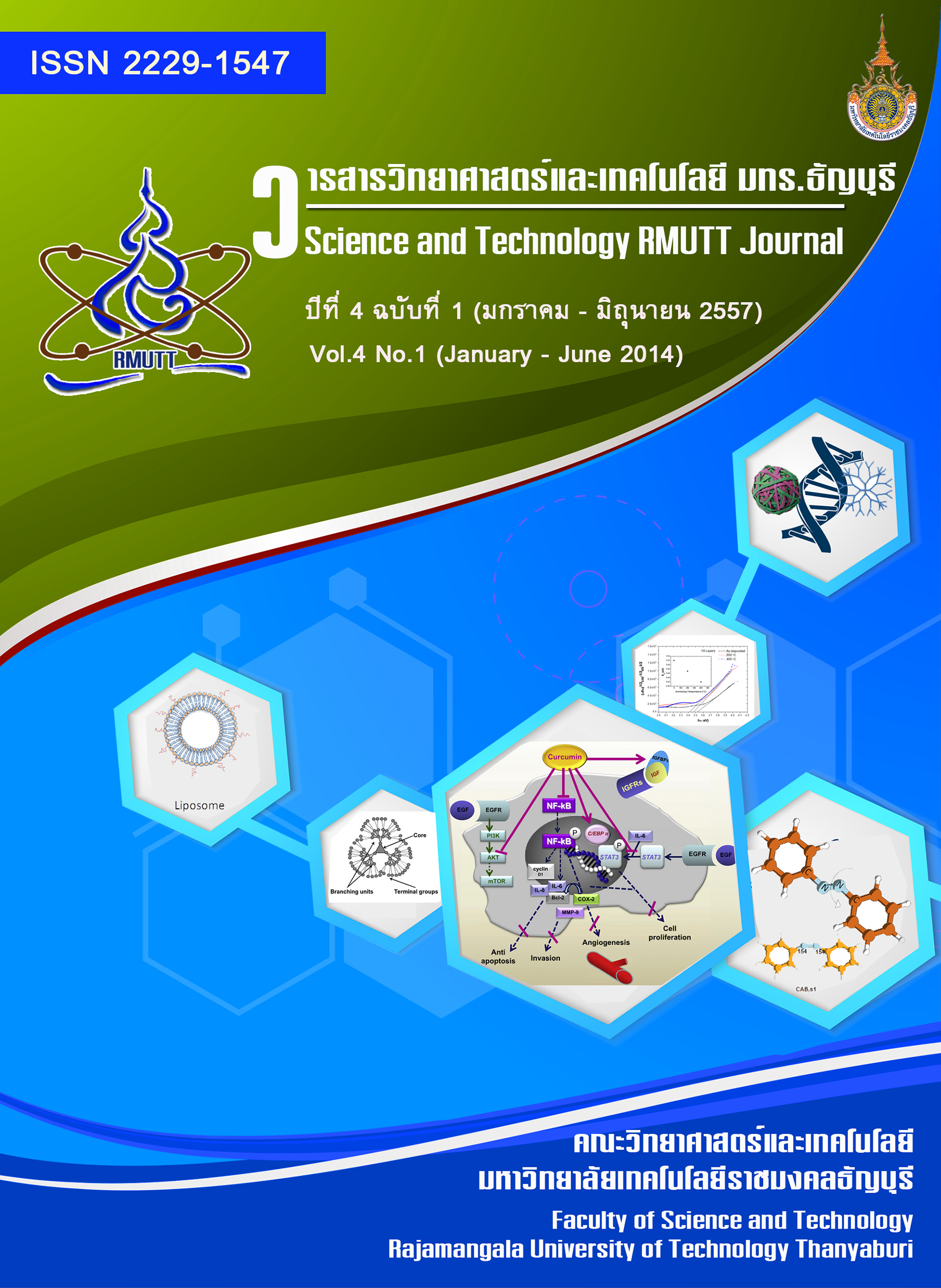Enhancement of anticervical cancer efficacy by nanodelivery system
Main Article Content
Abstract
Most drugs currently available for the treatment of cancer have limited potential because they are very toxic, insoluble in water, unstable, highly inefficient in treating cancer, and highly expensive. Therefore, treatments without these disadvantages are needed. Curcumin is one such extracted natural substance which derived from turmeric (Curcumin longa Linn.). The chemical structure of curcumin is 1, 7-bis (4-hydroxy-3-methoxyphenyl)-1, 6-heptadiene-3,5-dione. Curcumin has been demonstrated safety and anticancer efficacy. However, it has restrictive pharmaceutical role because of its extremely low aqueous solubility, rapid systemic elimination, inadequate tissue absorption and degradation at alkaline pH, which severely curtails its bioavailability. Therefore, this review article was to review curcumin against anticervical cancer cells activity, and to develop curcumin delivery system by using nanotechnology. The use of nanocarriers in order to encapsulate and deliver curcumin can increase its aqueous solubility, stability and bioavailability as well as controlled delivery of curcumin for cervical cancer therapeutic treatment.
Article Details
References
นท.นพ.ฉัตรชัย คูวัธนไพศาล อายุรแพทย์โรคมะเร็ง โรงพยาบาลภูมิพลอดุลยเดช มะเร็งวิทยาสมาคมแห่งประเทศไทย กรมแพทย์ทหารอากาศ ถนนพหลโยธิน สายไหม กทม.
WHO/ICO. Summary Report on HPV and Cervical cancer statistics in Thailand. (2010): 1-61.
N. Barkalina, C. Charalambous, C. Jones, K. Coward. Nanotechnology in reproductive medicine: Emerging applications of nanomaterials, Nanomed.: Nanotechnol., Biol. Med. (2014): In Press.
R.K. Maheshwari, A.K. Singh, J. Gaddipati, R.C. Srimal. Multiple biological activities of curcumin: a short review. Life Sci. 78 (2006): 2081–2087.
A.B. Kunnumakkara, P. Anand, B.B. Aggarwal. Curcumin inhibits proliferation, invasion, angiogenesis and metastasis of different cancers through interaction with multiple cell signaling proteins. Cancer Lett. 269 (2008): 199–225.
S. Singh, B.B. Aggarwal. Activation of transcription factor NF-kappa B is suppressed by curcumin (diferuloylmethane). J. Biol. Chem., 270 (1995): 24995–25000.
S. Aggarwal, H. Ichikawa, Y. Takada, S.K. Sandur, S. Shishodia, B.B. Aggarwal. Curcumin (diferuloylmethane) down-regulates expression of cell proliferation and antiapoptotic and metastatic gene products through suppression of Ikappa Balpha kinase and Akt activation. Mol. Pharmacol. 69 (2006): 195–206.
T.S. Huang, S.C. Lee, J.K. Lin. Suppression of c-Jun/AP-1 activation by an inhibitor of tumor promotion in mouse fibroblast cells. PNAS. 88 (1991): 5292–5296.
M.K. Bae, S.H. Kim, J.W. Jeong, Y.M. Lee, H.S. Kim, S.R. Kim, I. Yun, S.K. Bae, K.W. Kim. Curcumin inhibits hypoxia-induced angiogenesis via down-regulation of HIF-1. Oncol. Rep. 15 (2006): 1557–1562.
A.S. Jaiswal, B.P. Marlow, N. Gupta, S. Narayan. Beta-catenin-mediated transactivation and cell-cell adhesion pathways are important in curcumin (diferuylmethane)-induced growth arrest and apoptosis in colon cancer cells. Oncogene 21 (2002): 8414-8427.
P. Anand, C. Sundaram, S. Jhurani, A.B. Kunnumakkara, B.B. Aggarwal. Curcumin and cancer: An ‘‘old-age” disease with an ‘‘age-old” solution. Cancer Lett. 267 (2008): 133–164.
A. Zlotogorski, A. Dayan, D. Dayan, G. Chaushu, T. Salo, M. Vered Nutraceuticals as new treatment approaches for oral cancer – I: Curcumin, Oral Oncology, 49 (2013): 187–191.
A.L. Cheng, C.H. Hsu, J.K. Lin, M.M. Hsu, Y.F. Ho, T.S. Shen, J.Y. Ko, J.T. Lin, B.R. Lin, M.S. Wu, H.S. Yu, S.H. Jee, G.S. Chen, T.M. Chen, C.A. Chen, M.K. Lai, Y.S. Pu, M.H. Pan, Y.J. Wang, C.C. Tsai, C.Y. Hsieh. Phase I clinical trial of curcumin, a chemopreventive agent, in patients with high-risk or pre-malignant lesions. Anticancer Res. 21 (2001): 2895–2900.
P. Anand, A.B. Kunnumakkara, R.A. Newman, B.B. Aggarwal. Bioavailability of curcumin: problems and promises. Mol. Pharmaceutics 4 (2007): 807–818.
D.M. Maher, M.C. Bell, E.A. O'Donnell, B.K. Gupta, M. Jaggi, S.C. Chauhan. Curcumin suppresses human papillomavirus oncoproteins, restores p53, Rb, and PTPN13 proteins and inhibits benzo[a]pyrene-induced upregulation of HPV E7. Mol. Carcinogen. 50 (2011): 47-57.
K.P. Bhupesh, C.D. Bhudev. Constitutive activation of transcription factor AP-1 in cervical cancer and suppression of human papillomavirus (HPV) transcription and AP-1 activity in HeLa cells by curcumin. Int. J. Cancer 113 (2005): 951–960.
K. Madden, L. Flowers, R. Salani, I. Horowitz, S. Logan, K. Kowalski, J. Xie, S.I. Mohammed. Proteomics-based approach to elucidate the mechanism of antitumor effect of curcumin in cervical cancer. Prostaglandins Leukot Essent Fatty Acids 80 (2009): 9–18.
M. Shahid, M. Naim, M. Hasan, N. Islam, T. Rabbani, A. Mubeen. Apoptotic effects of curcumin (Diferuloyl Methane) on squamous cell carcinoma of the cervix. JK Science 13 (2011): 61-64.
R.K., Das, N. Kasoju, U. Bora. Encapsulation of curcumin in alginate-chitosan-pluronic composite nanoparticles for delivery to cancer cells. Nanomedicine. 6 (2010): 153–160.
A. Sahu, N. Kasoju, U. UBora. Fluorescence Study of the Curcumin Casein Micelle Complexation and Its Application as a Drug Nanocarrier to Cancer Cells. Biomacromolecules 9 (2008): 2905–2912.
A. Sahu, U. Bora, N. Kasoju, P. Goswami. Synthesis of novel biodegradable and self-assembling methoxy poly(ethylene glycol)–palmitate nanocarrier for curcumin delivery to cancer cells. Acta Biomater. 4 (2008): 1752–1761.
P.R. Debata, M.R. Castellanos, J.E. Fata, S. Baggett, S. Rajupet, A. Szerszen, S. Begum, A. Mata, V.V. Murty, L.M. Opitz, P. Banerjee. A novel curcumin-based vaginal cream Vacurin selectively eliminates apposed human cervical cancer cells. Gynecol. Oncol. 129 (2013): 145–153.
วรายุทธ สะโจมแสง และคณะ สิทธิบัตรเรื่อง เอ็น-เบนซิล-เอ็นโอ-ซัคซินิลไคโตซานสำหรับกักเก็บเคอร์คูมินเพื่อเพิ่มประสิทธิภาพในการต้านเซลล์มะเร็งปากมดลูก เลขที่คำขอ 1301005533 วันที่ 30 กันยายน 2556.


